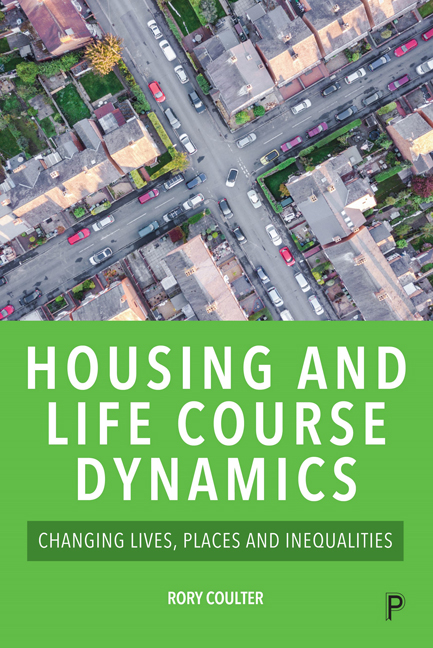Book contents
- Frontmatter
- Dedication
- Contents
- List of figures and tables
- List of abbreviations
- Notes on the author
- Acknowledgements
- Preface
- 1 Introduction
- 2 Housing: a life course perspective
- 3 Households and families
- 4 Learning and training
- 5 Employment and money
- 6 Health, well-being and care
- 7 Changing places
- 8 Understanding housing and life course dynamics
- Notes
- References
- Index
8 - Understanding housing and life course dynamics
Published online by Cambridge University Press: 18 January 2024
- Frontmatter
- Dedication
- Contents
- List of figures and tables
- List of abbreviations
- Notes on the author
- Acknowledgements
- Preface
- 1 Introduction
- 2 Housing: a life course perspective
- 3 Households and families
- 4 Learning and training
- 5 Employment and money
- 6 Health, well-being and care
- 7 Changing places
- 8 Understanding housing and life course dynamics
- Notes
- References
- Index
Summary
There is now a growing consensus that much of the Global North is in the grips of a housing crisis. Although the precise form this crisis takes varies from place to place, one common feature is that housing problems are always tightly bound up with wider issues of social inequality. Inequalities along multiple axes spanning many areas of life are both causes and outcomes of contemporary housing problems and so need to be placed centre-stage within housing-related research and debate.
This book sought to provide a fresh perspective on these issues by showing how who we are matters for our housing and how housing helps make us into who we are. This focus on how housing is embedded into the dynamics of 21st-century life courses enriches research and debate in two ways. First, the book has shown that residential decisions and behaviours are deeply intertwined with events and processes across the other domains of people’s lives, as well as in the lives of their significant others. The way housing careers unfold also varies geographically with shifts in housing behaviour helping to drive changes in local populations and in the social fabric of places. Taken together, these insights remind us that housing is not a discrete field of enquiry which can be boxed off and either theorised about or analysed on its own. Instead, aggregate trends in housing careers must be related to broad processes occurring elsewhere in modern societies, for instance shifts in their demographic structures, education systems, labour markets, cultures and public policies. Housing careers are closely intertwined with processes in other areas of life and ultimately it is these interactions which structure the overarching course of people's lives in ways which reshape places and societies.
Second, the book's focus on residential careers helps enrich our understanding of how housing systems function. Figure 8.1 depicts how housing systems can be viewed as constructed from three pillars: housing provision (how housing is supplied, exchanged, financed, regulated and so forth), the residential careers examined throughout this book, and the social meanings housing has for individuals (Clapham, 2005). While the provision pillar normally attracts the lion's share of the research and policy attention, provision-centric approaches often view people simply as passive respondents to market or state forces rather than diverse agents with their own life experiences, aspirations and preferences, goals, and ties to others (Clapham, 2005).
- Type
- Chapter
- Information
- Housing and Life Course DynamicsChanging Lives, Places and Inequalities, pp. 168 - 182Publisher: Bristol University PressPrint publication year: 2023

